Starting an indoor herb garden from seed is a great way to continue gardening during the winter months when snow and cold temperatures make doing anything outdoors next to impossible. The herbs will provide you with a hit of green, and make delicious fresh additions to your cooking.
Here’s what you need to know and how you can get started in 5 minutes. . .
Disclaimer: I garden in zone 3b in the Canadian Prairies, while I generally try to make what I write applicable to as many zones as possible, your results may differ for better or worse if you live elsewhere. However, I love learning about what grows best in other areas, so please share your experience in the comments with me so we can all learn more.
Due to the time of year I created this post and how far North I live, I needed to fake the herbs in this picture so that my blog would still look pretty. I’ve shown you my real results in this post and explained why things didn’t work out the way I had hoped.
This post contains affiliate links, which means that if you purchase anything, I earn a small commission at no extra cost to you. You can read more about it in my Privacy Policy. Thanks for supporting Shifting Roots!
What are the Best Herbs to Start Indoors?
Confession time: I am not an avid herb grower. This is my first year growing them (minus an experiment with growing basil a couple of years ago) and I’m learning as I go. I do, however, like to research what I don’t know, and from what I can gather, there are no hard and fast answers. My research has led me to believe that the easiest herbs to grow indoors are the ones that the author likes and works well in his or her geographical location. Ugh, that’s not really helpful, is it?
What I can say is this; grow what you think you will eat.
The “gods of herb gardening” are not going to strike you down if you don’t plant basil because it’s not your thing. Lemon balm. . . I’m looking at you!
Also, if you’re not purchasing a kit online, shop at a locally owned gardening centre and see what seeds they have available. Chances are, the staff there has experience with growing herbs in the winter and can share with you what varieties they like and are successful with. If you want to go with a done-for-you online kit, the seed sheet looks really cool!
No garden centre? Join us in the Growing Roots Gardening Community on Facebook and we’ll be happy to share with you what works for us!
Finally, if you’re reading this thinking, “Kristen, just give me a list of herbs to plant already!!!” here’s what I’m planting:
- Garlic chives
- Basil
- Oregano
- Thyme
- Sage
- Parsley
- Cilantro
Make of my list what you will.
Supplies for an Indoor Herb Garden from Seed
To start your own indoor seed garden you’ll need:
- the seeds you want to plant
- muffin liners
- jiffy pods
- hot water
- containers for germinating
- final containers/pots for transferring the herbs to
- potting soil
Open the seeds you’ll be panting and transfer each type into a muffin liner. Why? Herb seeds are generally tiny and it makes working with them easier and clean up faster.
Put the jiffy pods in the container for germinating and add hot water. The pods will puff up in a minute or two.
Add seeds, cover with a bit of soil in the pod, and set right by a south facing window. Water your jiffy pods every second day, or when they start to get dry.
In a week or two, your jiffy pods with hopefully look like this:
Don’t freak out about the moldy looking stuff. That happens when seeds germinate.
Once your seeds germinate and you can start to see roots through the pods, transfer to the final pot you want them in and add more potting soil. Here’s how my lettuce looked when it was ready. (Yes, I know lettuce is not an herb, but I really wanted to try growing it indoors.)
Here’s a quick video showing how I started my seeds:
Transferring Indoor Herbs to Pots
The final step in this process is to transfer your new herb babies into their final pot. I picked up some lovely grey clay pots at my local garden centre, as well as a good quality potting soil. I filled each pot 3/4 full of potting soil, put my plants where I wanted them, and filled up with more potting soil as needed.
Finally, I gave them a good watering and put them in my south-facing window sill. Your newly transplanted plants may look a bit sad and droopy the first few days, but they will quickly adjust to their new home and perk up.
Light, Water, and Winter Expectations
The most important factor in how well your herbs will do is how much light they get. For best results, keep your herbs in the windowsill of a south-facing window. I’ve also had good results with seed starting in a west-facing window that was in a totally white room.
Be prepared to turn your seedlings every day or two so they grow strong and don’t lean in one direction.
Check to see if your seeds need water every second day. When watering, you want the soil to be moist, but not drowning. If you can see a pool of water at the top of your pot, you’ve watered too much.
Finally, if you’re growing herbs indoors in the winter, know that they won’t grow like they do in the summer. Keep pinching off bits to use in your cooking to encourage growth.
Learn the Basics of Gardening in Just a Few Minutes

Gardening doesn't have to be complicated. Learn the basics in minutes, get started with your first garden in a day or less, and start your lifetime gardening adventure.
Enter your name and email address to download the Quick Start Garden Guide. You'll also get a mini-email course and weekly gardening tips and advice.
Does an Indoor Herb Garden Need Direct Sunlight?
In short, yes. There are probably some exceptions, but if you live in a colder zone like I do. . .yes.
Unfortunately, many of you who are reading this either don’t have a south facing window in your house, or window ledges thick enough to put plants on. In that case, your only remaining option is to use a grow light.
I don’t have any experience using the grow lights on the market today, as I use an ancient one that I inherited from my Dad. However, if I was buying one, I would buy something like this one, because it has an on/off timer and it’s very flexible, so you can adjust it as your herbs grow, and it doesn’t take up a lot of space.
Check out the grow light here.
Some Real Life Thoughts on Growing Herbs in the Fall in Zone 3b
About 3 weeks into this herb growing experiment, I’m starting to think that it wasn’t the best idea–at least this far North and in the Fall. I have no doubt in my mind that starting an indoor herb garden would work well if started in late February or March, but mine that I started in October is looking just okay. The plants seem kind of stretched out (leggy) and I think there simply aren’t enough hours of light for them. I have a large south-facing window, and if they can’t survive there, then they probably can’t survive anywhere this far North.
After talking to some other gardener friends who have tried to grow herbs indoors in the fall, they agree that it is challenging. You either have to use a grow light, or purchase established plants that can handle the stress of low light temporarily.
Also, if you didn’t read the disclaimers before, I needed to fake two of the pictures in this post for that very reason. I hope to replace them in a few months when the actual herbs I planted start looking better.
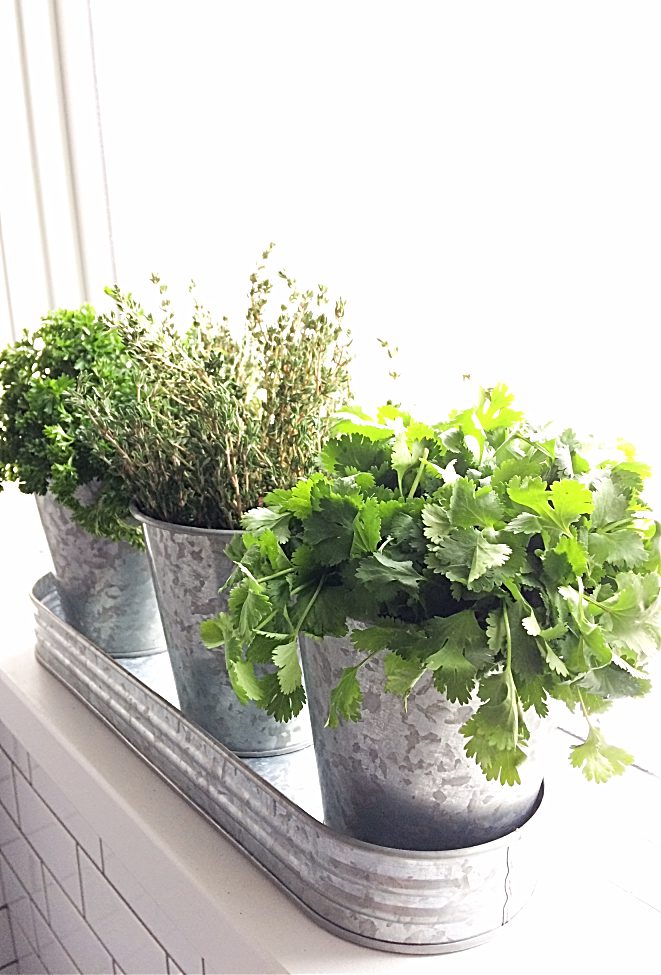
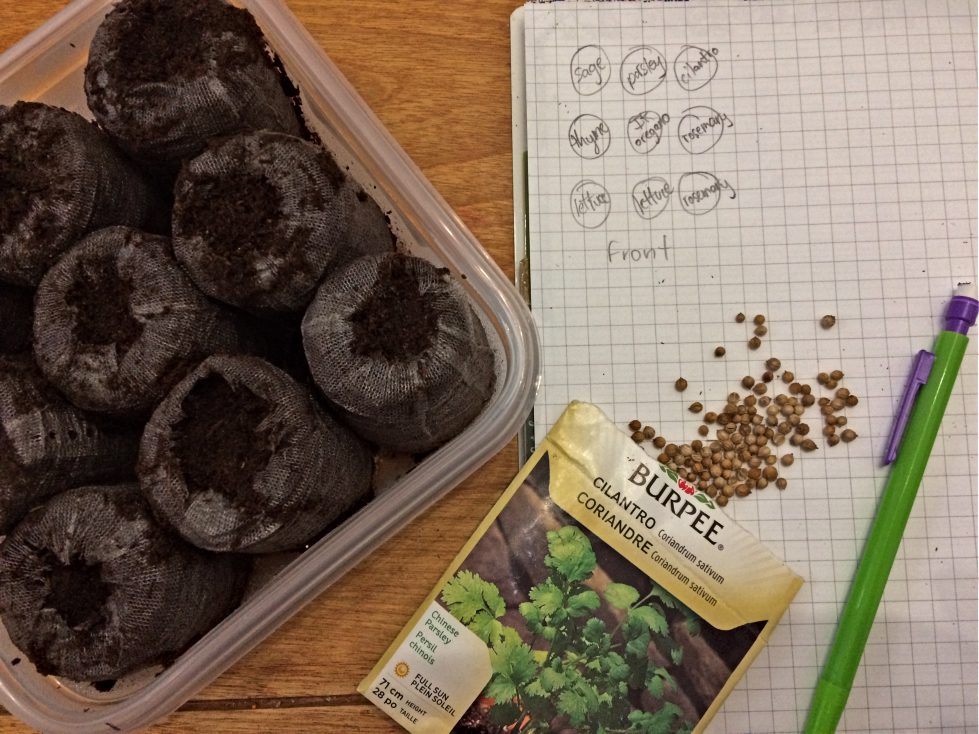
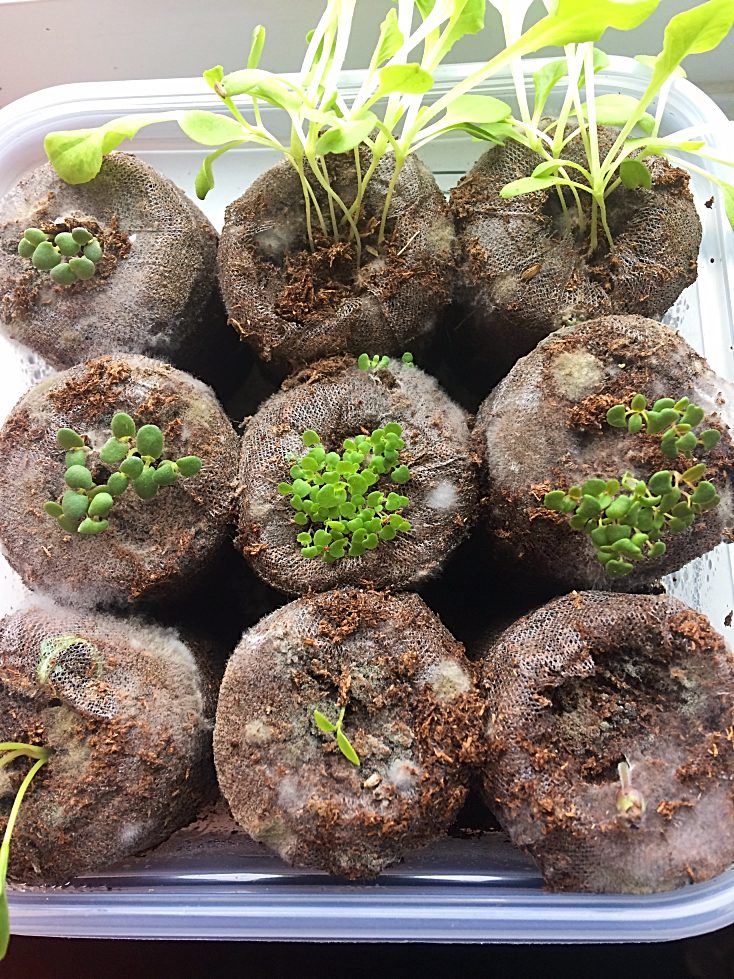
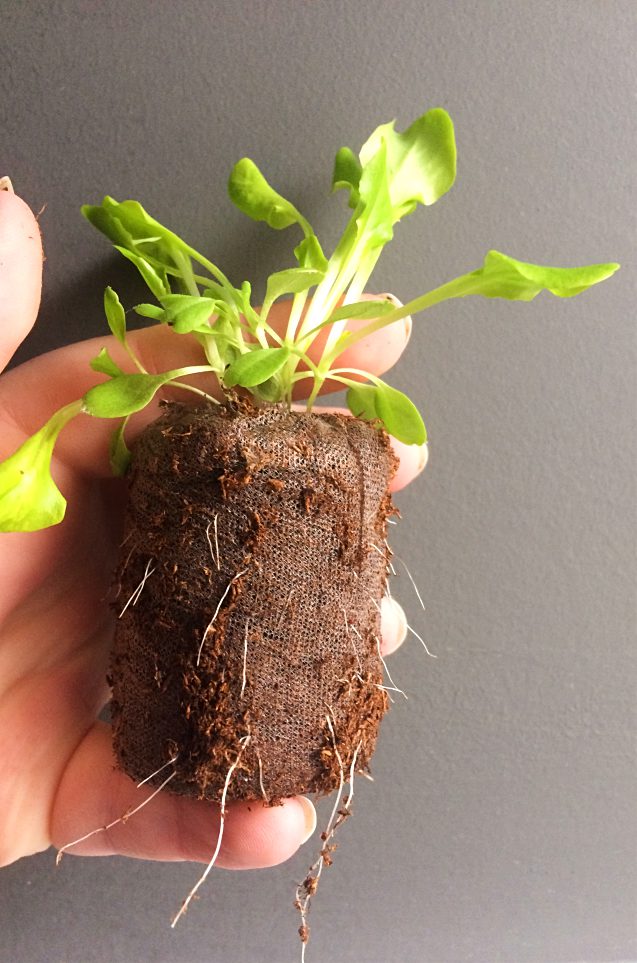
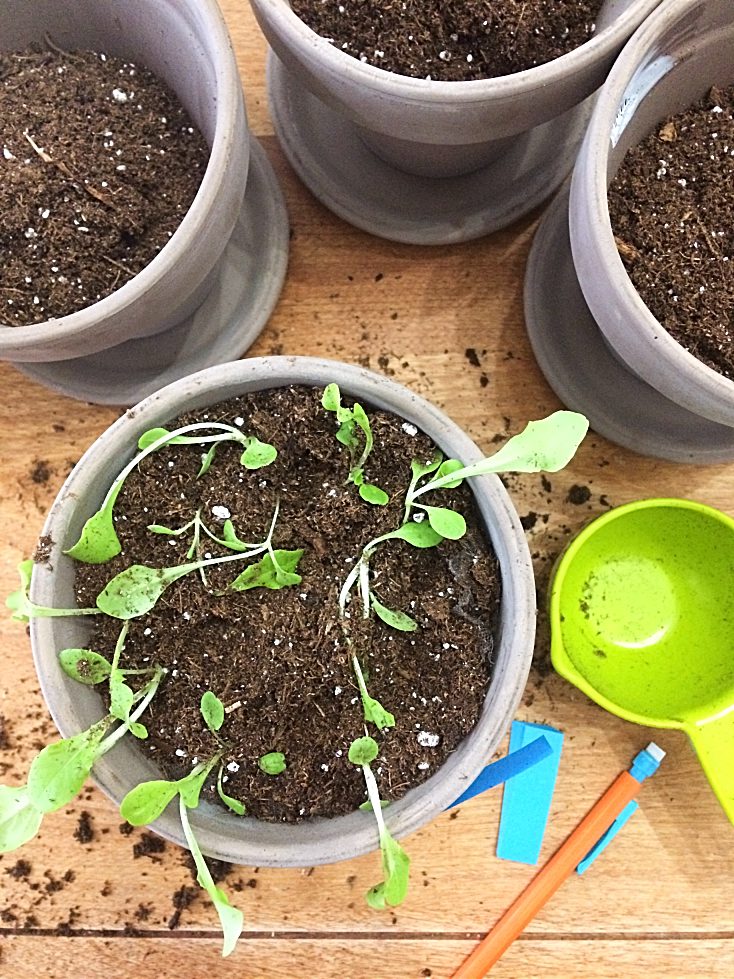
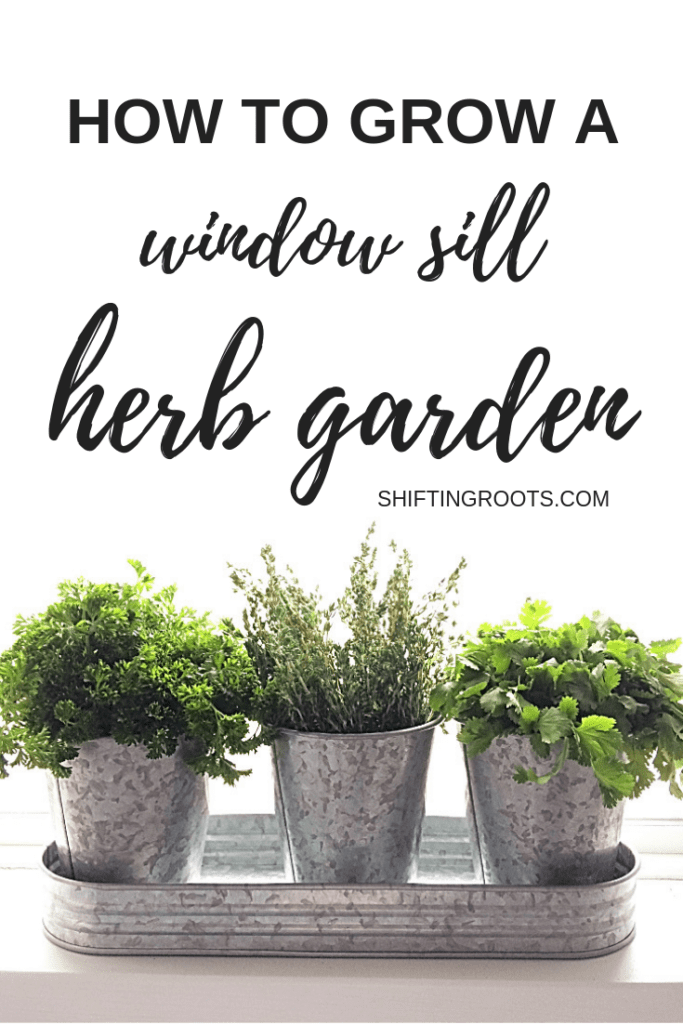

Sarah
Stacey Blanton
Kristen Raney
Karen
Shay